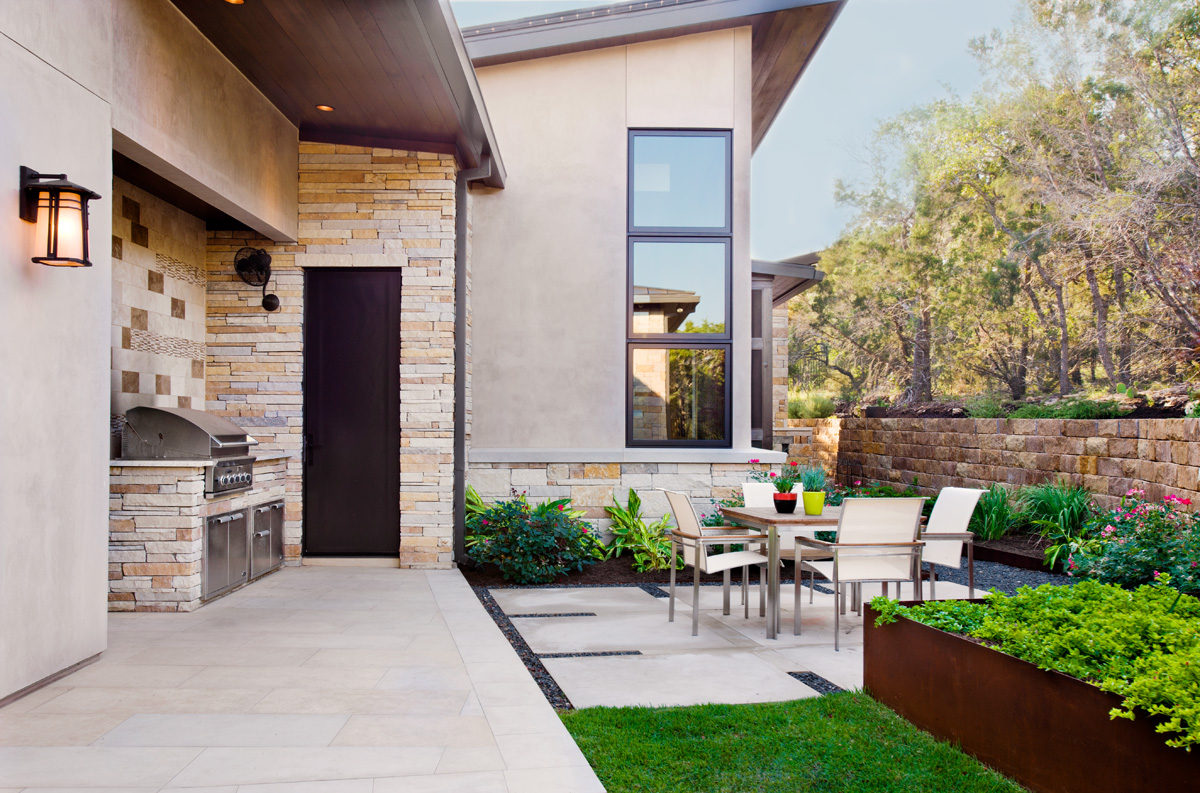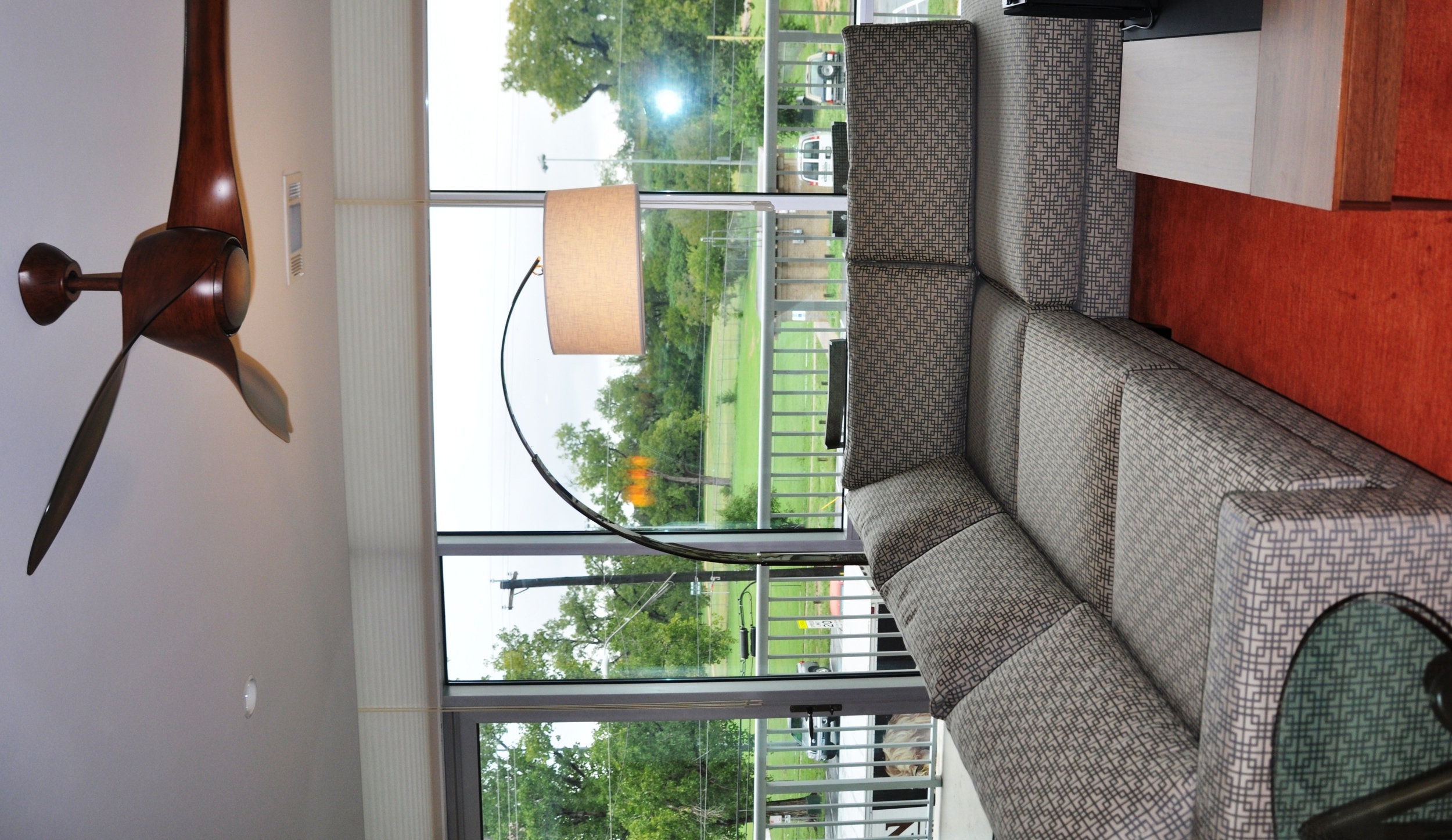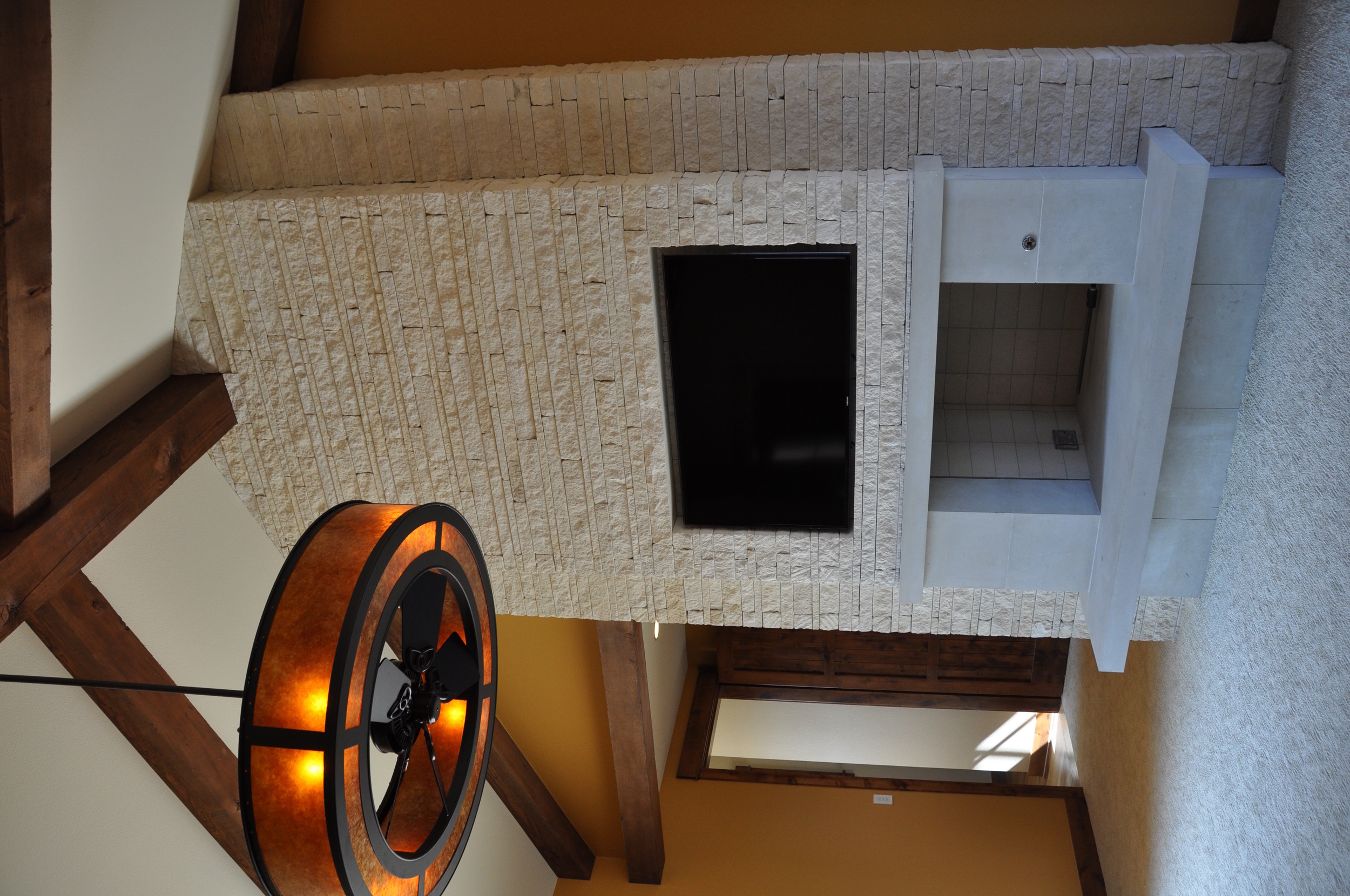5 things to consider when looking for the best ceiling fan for your room:
Ceiling fans...are they a necessary evil or a stylish accent to the room?
We all know how hot it gets in the Texas Hill Country summers! To get some relief, many of us rely on ceiling fans to keep our homes comfortable. Running a ceiling fan can make a room feel about 5 degrees cooler than it actually is.
If you are ready to upgrade your existing fan or looking to add one, here are 5 things to keep in mind before you make the purchase:
1. Size of your Space
It is easy to underestimate the size of the fan you need. A 48" fan may sound big but if you install an undersized fan you won't get the air circulation you need to cool off.
A good rule of thumb is:
- Rooms less than 150 sq. ft. - Use a 42-48" diameter fan
- Rooms 150-350 sq. ft. - Use a 52-56" fan
- Rooms greater than 350 sq. ft. - Use at least a 60" fan or you can purchase 2-48" fans
Below is an example of a large open-concept living, dining & kitchen space, where this 8 ft. Big Ass Fan serves as both a cooling unit and a WOW factor.
2. Ceiling Height
When selecting a fan for your space, know your ceiling height. If it is an 8' ceiling, your best solution is a ceiling-hugger style fan. If your ceiling is 10'+, you may need to add additional down rods to accommodate the extra height.
The typical rule of thumb is for the blades of your fan to be 8-9 feet above the floor. As you see in the photo below, we added a 12" down rod to our fan to accommodate the 10' ceiling--placing the fan at the perfect height for this bedroom.
3. Type of Installation
Another critical factor to take into account when shopping for a new fan is: sloped or flat ceiling?
Some fans include adapters for sloped ceilings, but not all have this capability. Some adapters can be purchased separately, but can have restrictions on the angle it will accommodate; so it is important to know these details if you have a vaulted or sloped ceiling.
Sometimes the best solution isn't a ceiling fan at all. In the image below, we used a wall-mounted, oscillating fan to blow the smoke away from the bar-b-que area.
*Make sure to look for a damp or wet rated fan if installing outdoors*
4. Lighting
Light kits have gotten a bad wrap over the years and for the most part we agree. Lights on fans are usually unattractive. This being said, the fan companies have heard our plea. Many have begun integrating lights into the fan itself making for a more complete and attractive look.
Which look do you like the best? If you know you want a light, certain fans have customized options for you to pick the shape and globe style you want. Also, some fans that do come with a light, come with a cap in case you decide you do not want to use the light kit.
In the living room pictured below we capped the light because we loved the fan design, but the recessed cans in the room provided plenty of general lighting.
5. Style
Just like light fixtures, there are a wide variety of ceiling fan styles. To start with, there are contemporary and traditional fans. There are fans that have multiple blade material options--from clear acrylic, all the way to woven rattan.
Many times fans blend in to the ceiling because they are thought of as utilitarian, but there are plenty of styles that can take your fan from Blah to Tah-DAH.
Below is a unique example of a ceiling fan we used in a bedroom that is just as much art as function.
What ceiling fan is right for you? What will fit best in your space?
Do you want to go from Blah to Tah-DAH with your lighting in a new or existing space? We are here to help with great ideas and friendly purchasing advice. Give us a shout to help transform your space.




